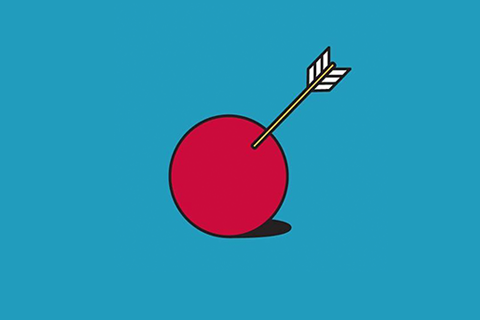Why Are We So Quick To Disregard Women's Pain?
thinx archive
·5 min read

by Kelsey Duchesne | 09/07/2016
“She’s probably just overwhelmed", I heard the doctor say to my mom on the other side of the sterile hospital room. They may have only been a few feet away, but their voices felt so distant they seemed to echo. Moments before, shortly after waking up from my MRSA staph infection surgery, a charismatic doctor strolled into the room (because charismatic doctors always stroll, right??) and told me he was going to pull out a splint that was still intact above my armpit, where they drained my poisonous cyst just hours before. My arm was already sore, and the idea of the long splint being pulled out of my body, before my eyes, reminded me of a cheap magicians trick-- the ones that are always too quease-inducing for me to watch.
Without prompting me, this d̶i̶c̶k̶h̶e̶a̶d̶ doctor reached over and pulled the long splint out of my arm, and I watched, stone cold sober and exhausted, in absolute horror. I was silent as he did it, mouth agape and stunned. As my body began to react to the severe pain shooting through my arm I let out the most bizarre and depressing moan I’ve ever emitted. My arm was steeped with so much pain my eyes couldn’t focus. I heard the doctor continue to generalize my reaction as "normal" and "overwhelmed", and I remember thinking “No-- sobbing when you get a shot could maybe be considered a bit much--but pulling out a long splint from a raw arm immediately after surgery? Why am I being treated like I’m overdramatic about my pain?”
In recent years, more studies have focused on determining the differences between the pain that men and women experience. In the New York Times opinion piece, “The Gender Gap in Pain”, Laurie Edwards quotes the study The Girl Who Cried Pain: A Bias Against Women in the Treatment of Pain. “[The study] found that women were less likely to receive aggressive treatment when diagnosed, and were more likely to have their pain characterized as “emotional,” “psychogenic” and therefore “not real,” she wrote. “Instead of appropriate care for physical pain, this can lead to treatment for mental health issues that might not even exist. The situation is further complicated by the fact that antidepressants are absorbed differently in women and vary in effectiveness, depending on hormonal cycles.”
So if men and women’s pain are often felt differently, and should be treated differently, then what type of medical innovation and treatment are we receiving for disorders that are specific to the female body?
Endometriosis, a disorder in which your tissue that lines the uterus grows outside rather than inside, is a disease that affects 1 out of 10 reproductive women. Despite the high percentage of women who suffer from this disease, it only received 7 million dollars of funding from the National Institutes of Health in 2014 (compare this to 1 billion for diabetes). In 2011, endometriosis received twice the amount in funding-- so why was there such a dramatic decrease? “Endometriosis is excruciatingly isolating,” Kelsey Fain wrote in her piece My Battle With Endometriosis for THINX. “No one believes the distress you are in when you physically appear to be fine. But not only does it cause painful cycles it also wreaks havoc on the hormones, resulting in frequent nausea, migraines, trouble sleeping, extreme fatigue and severe PMS.” Before undergoing surgery in 2013, Fain wrote that she was “labeled as sensitive, crazy, and a hypochondriac. In college I was told it must be an STD (until my lab tests proved otherwise). I was subjected to doctor after doctor handing me prescription meds or birth control pills and rolling their eyes at my “antics”.
Padma Lakshmi, founder of the endometriosis foundation of america, claims she was not properly diagnosed for 10 years. "If I had been diagnosed at 16, or 26, or even 32, I would have gained valuable time. I would have been able to be more present for my family and friends...[had] a greater capacity to advance professionally, and I would have also had a greater capacity for intimacy," she told CNBC.
Women on their periods could also experience dysmenorrhea and menorrhagia, which are both known to be painful and create extreme discomfort. 1 in 10 women suffer from dysmenorrhea, which cause extremely painful period cramps. There is primary dysmenorrhea, which is when the muscular wall of the womb contracts, and secondary, which could be a symptom of endometriosis or a pelvic inflammatory disease. The pain from dysmenorrhea can last up to a week BEFORE your period starts (so like, a quarter of your entire year. 1 out of every 4 days. Yeesh.) and can continue into the first few days of your period. Dysmenorrhea can often go untreated, because we’re never really taught how to measure menstrual pain. Aside from 2 advil and a heating pad, I never spoke to a doctor about alternative remedies that would be better suited for my high volume of pain.
Menorrhagia, which can overlap with dysmenorrhea, causes extremely heavy periods, and can be a warning sign of having adenomyosis, pelvic inflammatory disease, and cervical cancer (among others.) Menorrhagia can go a long time without getting treated, because, like pain, the amount of blood that a women should lose on her period (based on weight/age/health) is rarely confirmed or discussed by a medical professional.
Women are so often told that their pain is exaggerated in their head. That pain is just one of the incurable symptoms for menstruating. That they are being “overdramatic” (no) or simply just “overwhelmed" (um, no). If we continue to delegitimize women’s pain, limit funding, or react flippantly as they describe their reactions to symptoms, they will continue to wait longer to get diagnosed. They will suffer through pain that could be treated properly. They will not reach out for authentic comfort from others. They will hold it inside and continue through their day at work, because that is what they’ve been told to do. Let’s continue to speak about our pain.
When I look back on that day 5 years ago, curled in my hospital bed, biting my tongue so I looked brave, I do desperately wish I could correct my doctor. I wish I could tell him that no, I wasn’t overwhelmed, but that pulling out my splint without proper warning, explanation, or medication was insensitive and seemed entirely unprofessional. That I have a right to pain, and I don’t need to pretend to feel any other way.
by Kelsey Duchesne


